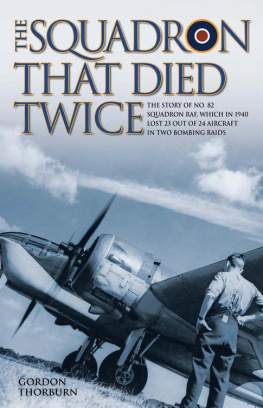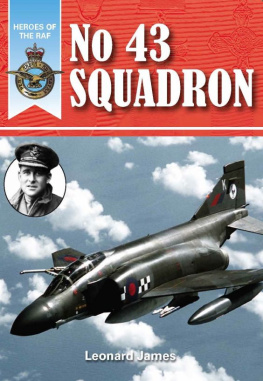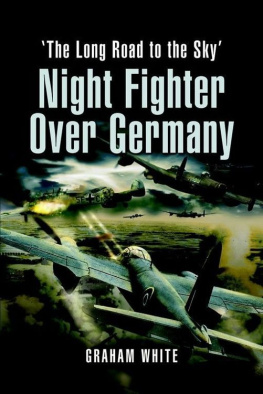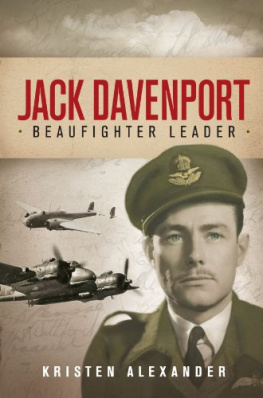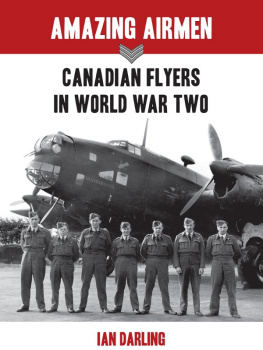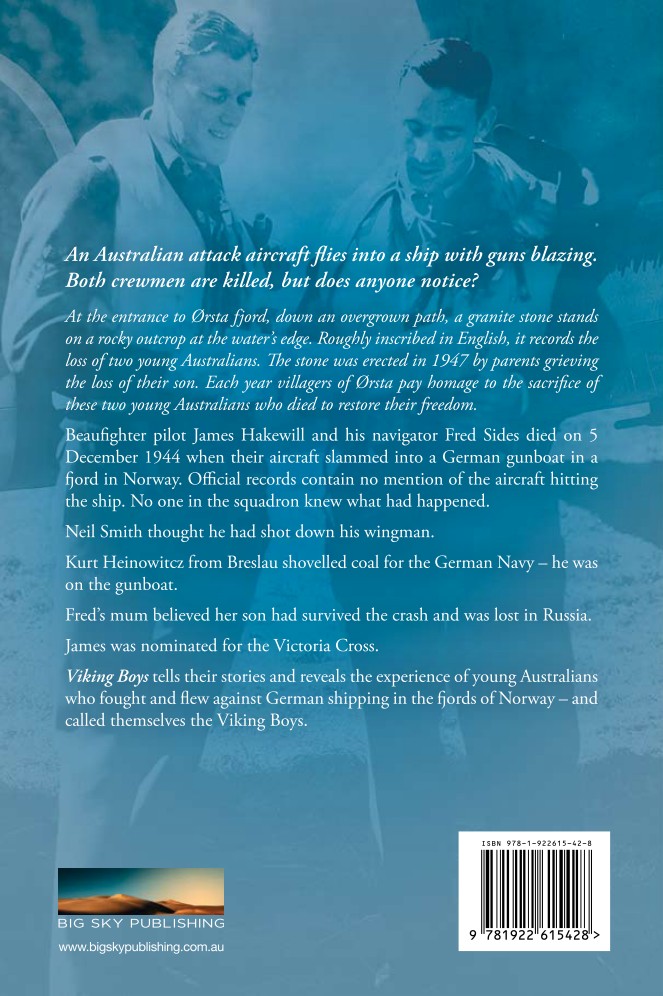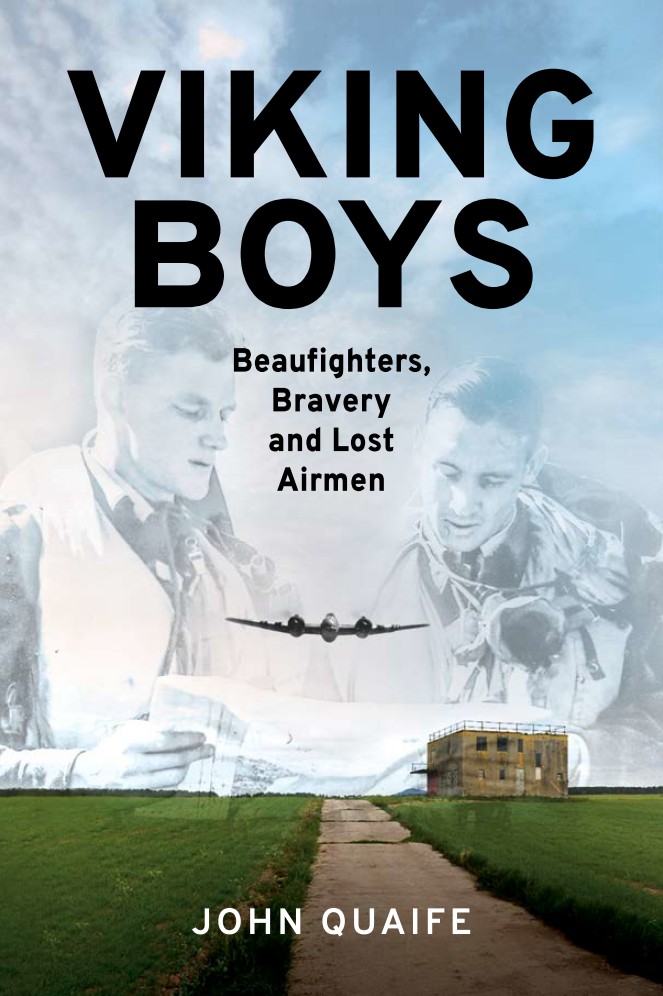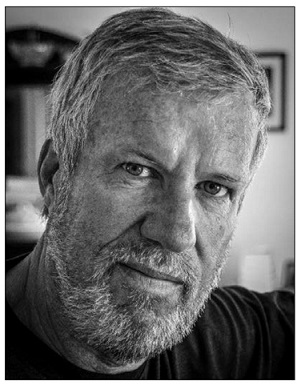Contents
Copyright Alfred John Quaife
First published 2021
This book is copyright. Apart from any fair dealing for the purposes of private study, research, criticism or review as permitted under the Copyright Act, no part may be reproduced, stored in a retrieval system or transmitted in any form or by any means, electronic, mechanical, photocopying, recording or otherwise, without written permission.
All inquiries should be made to the publishers.
Big Sky Publishing Pty Ltd
PO Box 303, Newport, NSW 2106, Australia
Phone: 1300 364 611
Fax: (61 2) 9918 2396
Email:
Web: www.bigskypublishing.com.au
Cover design and typesetting: Think Productions

Title: Viking Boys - Beaufighters, Bravery and Lost Airmen
ISBN: 978-1-922615-42-8
VIKING BOYS
Beaufighters, Bravery and Lost Airmen
JOHN QUAIFE
VIKING BOYS
Beaufighters, Bravery and Lost Airmen

JOHN QUAIFE
Table of Contents
About the Author
John Quaife grew up in Melbourne and, as a kid, just loved military aviation. He lived the dream. John spent 28 years with Royal Australian Air Force as a fighter pilot. He is a graduate of the RAAFs top gun training course and his service career included command of one of Australias finest fighter squadrons. He is also one of a small number of pilots who has successfully ejected from a stricken aircraft his Mirage fighter suffered an engine failure and came down on mudflats near Darwin in 1985. By 2002 John was one of Australias most experienced fighter pilots and he commanded all strike and fighter squadrons in Australia. On promotion to Air Vice-Marshal, John was appointed Air Commander Australia - the RAAFs most senior operational commander. In 2005 he was attached to United States Central Command as director of all coalition air operations in the Middle East theatre.
After his retirement from full time service, John was appointed to the Defence Honours and Awards Appeals Tribunal. He chaired the panel that considered James Hakewill for the award of a posthumous Victoria Cross. Although no award was possible, the true story of Hakewill, his fellow aviators, and the people on the ground in rsta, took John to Norway and into his current career as an author. John now lives in Newcastle and is a writer for the Air Forces History and Heritage directorate. His story of the Royal Australian Air Force involvement with the Battle of the Atlantic in World War II will be published in 2022. He is also working on a history of F/A-18 aircraft in Australian service.
ONE
Getting Airborne
The midday launch was much easier to take than yet another freezing pre-dawn launch. The United Kingdom Meteorological office described November 1944 in Scotland as rather cold; to the Australians of No 455 (RAAF) Squadron it was bloody freezing and miserable. Low cloud, widespread gales and driving rain prevented effective operations for weeks. Snow and sleet whipped through the Royal Air Force Station at Dallachy adding cold misery to the boredom of keen Beaufighter crews forced by the weather to remain on the ground.
The ANZAC Strike Wing had been grounded by miserable weather for five days; stuck on the ground waiting for the weather to clear - and the waiting was tough. Scotland was freezing -literally. A depression south of Iceland crossed to the north of Scotland bringing snow and sleet. Considerable snow blanketed
RAF Station Dallachy and even though many of the Australians had giggled like children during their first ever snowball fights, the novelty had well and truly worn off. The damp cold got into your bones and made life tough; it was especially tough for the ground crew. Manhandling aircraft and loading weapons was demanding, physical work but fingers getting stuck to frozen metal parts? That was beyond a joke, and the weather was not doing much for the flying either.
At one point some bright officer had the debatably brilliant idea that the ground crew could clear the runway of about 30 centimetres of snow by hand! Because snow on the ground was not usually an issue for a station so close to the North Sea, RAF Dallachy was not equipped for this unusual dump. All trades were assembled on the airfield after tea, struggling in their greatcoats and wellies, wielding a limited number of shovels in a futile attempt to clear away the snow. They worked for quite some time, taking it in turns to shovel snow into trucks which in turn dumped the stuff at the airfield perimeter. They did manage to clear quite a large area before the realisation finally sank in that clearing the entire runway would be impossible, and so the effort was called off.
But the first Tuesday in December finally brought a break; the weather was suddenly clear, snow on the runway was no longer an issue and shipping was reported in the Norwegian fjords. Launching from an airfield just 25 kilometres to the east of Dallachy, the De Havilland Mosquito crews of the Banff Wing scored the pre-dawn effort. The Beaufighter boys of the Dallachy Wing were tasked with a midday launch.
For the pilots, the launch process was almost the most procedurally challenging component of any wing strike and getting that process right was key to the entire mission. The trick was for all of the aircraft from the wing to take to the air at roughly the same time, form up into a fairly tight gaggle, and head out across the North Sea in strength. As the aircraft headed off on a direct track to Norway, there was no way for stragglers to catch up. There were no corners to cut and not much available in the way of overtake potential. If separated from the gaggle, the chances of joining up with the formation were slim.
Thirty-two-year-old Squadron Leader John 'Johnny' Pilcher from Burwood in Sydney was leading the push. Johnny was also leading the squadron as its acting commanding officer. Wing Commander Colin Milson DFC, the squadrons actual commanding officer, was on leave. Apart from enjoying a well-earned break, Colin Milson had an appointment in London.
Just 24 years old, Colin Milson from Longreach in Queensland was twice awarded the Distinguished Flying Cross even before being appointed to command No 455 Squadron. In late November 1944, he was in London because he had an appointment at Buckingham Palace to be invested with the Distinguished Service Order. This honour recognised his brilliant leadership, gallantry and his careful planning of many missions flown between July and September of 1944. Later, in 1945, Colin Milson would receive a bar to his DSO for an attack against German shipping in Frde fjord, Norway. Johnny Pilcher, the acting commanding officer, standing in to cover Colins absence, would also be recognised by a bar to his DFC for his leadership of No 455 Squadron during attacks against enemy shipping during December 1944.



